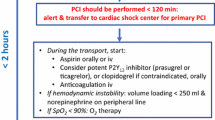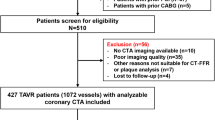Abstract
Patients requiring infrainguinal bypass surgery often have diffuse atherosclerotic disease, and perioperative myocardial infarction (MI) is a potentially lethal complication that is not uncommon in these patients. To establish additional clinical characteristics that might be useful in identifying patients who require more extensive cardiac evaluation, we conducted an exploratory case-control study comparing 22 patients who had a perioperative MI following elective infrainguinal bypass surgery with 191 control subjects whose bypasses were uneventful. In addition to previously recognized risk factors (e.g., history of angina or prior MI), we examined the association of perioperative MI with (1) results of common preoperative laboratory tests and ECG, (2) preoperative use of certain medications, and (3) intraoperative factors that might be anticipated prior to surgery (e.g., duration of surgery or type of anesthesia). Perioperative MI was associated not only with a history of angina, prior MI, or coronary artery disease but also with the need for certain cardiac medications, higher white blood cell (WBC) counts, ST-segment depression, left bundle branch block, and lengthy surgical procedures. Multiple logistic regression analysis identified the following factors as being independently associated with perioperative MI: preoperative antiarrhythmic agents (odds ratio [OR]=26.4,p 0.006), nitrates (OR=8.4,p=0.006), calcium channel blockers (OR=5.5,p=0.04), and aspirin (OR=6.8,p <0.01) and ST-segment depression (OR=11.8,p=0.01), WBC count (OR=1.27/1000,p=0.005), and duration of surgery (OR=2.2/hr,p=0.0001). In patients undergoing infrainguinal bypass surgery, perioperative MI is associated not only with a history of previous cardiac events and ECG evidence of ischemia but also with regular use of certain cardiac medications, higher WBC counts, and longer surgical procedures. Incorporation of these variables into current methods of risk assessment might improve their predictive value sufficiently to provide an objective, inexpensive means of distinguishing patients who warrant extensive preoperative cardiac evaluation from those who do not.
Similar content being viewed by others
References
Hertzer NR. Fatal myocardial infarctions following peripheral vascular operations. A study of 951 patients followed 6 to 11 years postoperatively. Cleve Clin Q 1982;49:1–11.
Hertzer NR, Young J, Beven EG, et al. Late results of coronary bypass in patients with peripheral vascular disease. II. Five year survival according to sex, hypertension, and diabetes. Cleve Clin J Med 1987;54:15–23.
Eagle KA, Singer DE, Brewster DC, et al. Dipyridamolethallium scanning in patients undergoing vascular surgery. JAMA 1987;257:2185–2189.
Raby KE, Goldman L, Creager MA, et al. Correlation between preoperative ischemia and major cardiac events after peripheral vascular surgery. N Engl J Med 1989;321:1296–1300.
Taylor LM, Yeager RA, Moneta GL, et al. The incidence of perioperative myocardial infarction in general vascular surgery. J Vasc Surg 1991;15:52–61.
Goldman L, Caldera D, Nussbaum SR, et al. Multifactorial index of cardiac risk in non-cardiac surgical procedures. N Engl J Med 1977;197:845–850.
Detsky AS, Abrams HB, McLaughlin JR, et al. Predicting cardiac complications in the patients undergoing non-cardiac surgery. J Gen Intern Med 1986;1:211–219.
Fleisher LA, Rosenbaum SH, Nelson AH, et al. The predictive value of preoperative silent ischemia for postoperative ischemic cardiac events in vascular and non-vascular surgery patients. Am Heart J 1991;122:980–986.
Mangano DT, Browner WS, Hollenberg M, et al., and the Study of Perioperative Ischemia Research Group. Association of perioperative myocardial ischemia with cardiac morbidity and mortality in men undergoing noncardiac surgery. N Engl J Med 1990;323:1781–1788.
Hollenberg M, Mangano DT, Browner WS, et al. Predictors of postoperative myocardial ischemia in patients undergoing non-cardiac surgery. JAMA 1992;268:205–209.
Cooperman M, Pflug B, Martin EW Jr, et al. Cardiovascular risk factors in patients with peripheral vascular disease. Surgery 1978;84:505–509.
Boucher CA, Brewster DC, Darling RC, et al. Determination of cardiac risk by dipyridamole-thallium imaging before peripheral vascular surgery. N Engl J Med 1985;312:389–394.
Zalokar JB, Richard JL, Claude JR. Leukocyte count, smoking, and myocardial infarction. N Engl J Med 1981;304:465–468.
Friedman GD, Klatsky AL, Siegelaub AB. The leukocyte count as a predictor of myocardial infarction. N Engl J Med 1974;290:1275–1278.
Yarnell JWG, Sweetnam PM, Elwood PC, et al. Haemostatic factors and ischemic heart disease: The Caerphilly study. Br Heart J 1985;53:483–487.
Goldstein AG Jr, Keats AS. The risk of anesthesia. Anesthesiology 1970;33:130–143.
Yeager MP. Regional anesthesia for the patient with heart disease; Pro: Regional anesthesia is preferable to general anesthesia for the patient with heart disease. J Cardiothorac Anesth 1989;3:793–796.
Beattie C. Regional anesthesia for the patient with heart disease; Con: Regional anesthesia is not preferable to general anesthesia for the patient with heart disease. J Cardiothorac Anesth 1989;3:797–800.
Author information
Authors and Affiliations
Additional information
We are indebted to Maryann Barry, RN, for helping to collect the preoperative ECG reports and to Timothy Heeren, PhD, Boston University School of Public Health, for advice regarding statistical analysis.
About this article
Cite this article
Gillespie, D.L., LaMorte, W.W., Josephs, L.G. et al. Characteristics of patients at risk for perioperative myocardial infarction after infrainguinal bypass surgery: An exploratory study. Annals of Vascular Surgery 9, 155–162 (1995). https://doi.org/10.1007/BF02139658
Issue Date:
DOI: https://doi.org/10.1007/BF02139658




